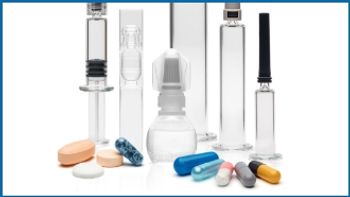
Equipment and Processing Report
- Equipment and Processing Report-01-16-2013
- Volume 0
- Issue 0
Logging the Cold Chain
Advances in data loggers and radio-frequency identification tags help meet the increasing need for managing the pharmaceutical cold chain.
Pharmaceutical manufacturers devote considerable time and resources to implement effective cold-chain practices that protect products, especially sensitive biopharmaceuticals, blood products, and vaccines from damage. Although efforts have traditionally focused on frozen (−20 °C) and refrigerated (2–8 °C) products, there is growing attention to controlled room temperature (CRT) products, which require maintenance at 15–25°C to ensure quality and efficacy. Dramatic growth in the number of temperature-sensitive products, as well as evolving regulations worldwide, make it more essential than ever to manage conditions in storage and transit.
Data loggers, which record conditions the shipment experiences and can quickly indicate if a problem occurred, are increasingly being used to meet this need for tracking and managing conditions. The trend is toward greater scrutiny of the data from each shipment says Andrew J. Mills, CEO, Americas for Intelsius, a DGP Company and supplier of temperature-controlled packaging. With data being more carefully evaluated, there will be “greater pressure on temperature-controlled packaging providers to do a better job of qualifying their solutions against multiple temperature ranges,” he adds.
Ease of use for data loggers is maximized by features like an onboard USB connection. “When plugged in, the logger provides PDF data files,” explains Rich Ellinger, vice-president, Life Sciences at PakSense, the maker of a label-like data logger (BIOmed XpressPDF Temperature Monitoring Label). “No additional infrastructure is needed.”
With wireless technology, a container doesn’t even have to be opened to access temperature data. Keeping the shipper closed not only helps maintain the environment around the payload, but also means, “there’s no need to change supply-chain practices to collect information,” explains Kevin Payne, senior director of marketing at Intelleflex, a provider of radio-frequency identification (RFID) tags and related software for temperature monitoring. Data can be read or written to a Class 3 battery-assisted passive RFID tag at distances up to 300 feet. This stronger penetration power allows readability through ice and insulation, for example. The credit-card-size tag, which measures about 0.25-inch thick, will gain functionality in 2013 with the addition of humidity and light-monitoring features (TMT-8500 temperature monitoring tag, Intelleflex). “Light monitoring is important because recipients can tell if the box has been opened during its travels,” explains Payne.
Interest in RFID-based monitors is increasing, according to Tom Dolan, director of sales at RURO, a supplier of turnkey RFID systems. Since hundreds or even thousands of RFID tags can be scanned at the same time, the technology offers potential for high-speed automated data collection not possible with traditional barcodes. In addition, Dolan says, RFID “costs have come down, and there are more vendors in the market.” Furthermore, performance improvements allow RFID tags to work reliably despite metal interference and other challenging conditions like cryo environments.
For more about this topic, read Hallie Forcinio’s cover story, “Packaging Innovations Aid Cold-Chain Efficiency” in the upcoming February 2013 issue of Pharmaceutical Technology or “
—Hallie Forcinio is Pharmaceutical Technology's packaging editor,
Articles in this issue
almost 13 years ago
Improving Tablet-Press Tooling Maintenance and Storagealmost 13 years ago
January 2013 Editor's Picks: Products from Cole-Parmer and Yokogawaalmost 13 years ago
Using Micronization to Reduce API Particle SizeNewsletter
Get the essential updates shaping the future of pharma manufacturing and compliance—subscribe today to Pharmaceutical Technology and never miss a breakthrough.





